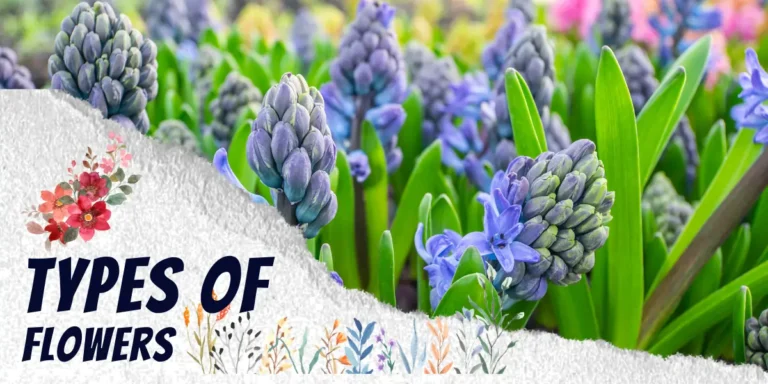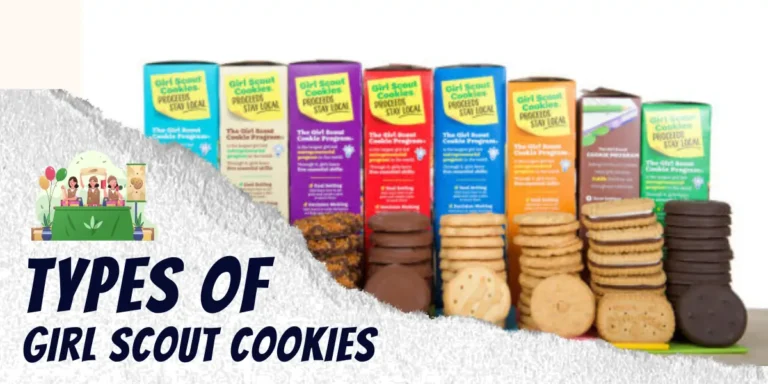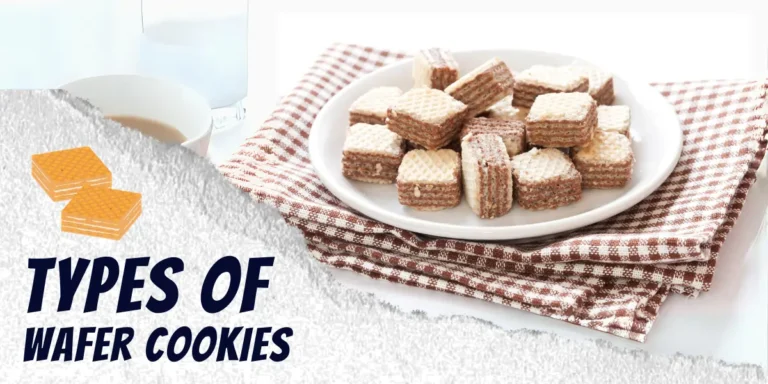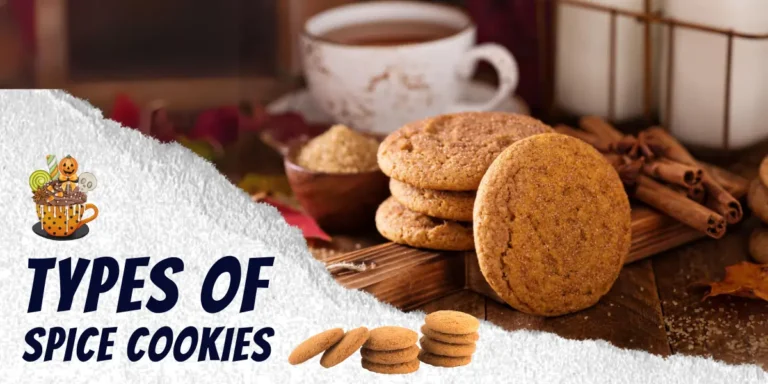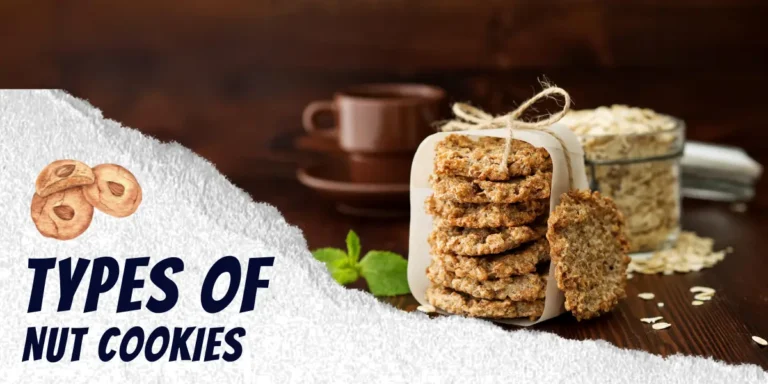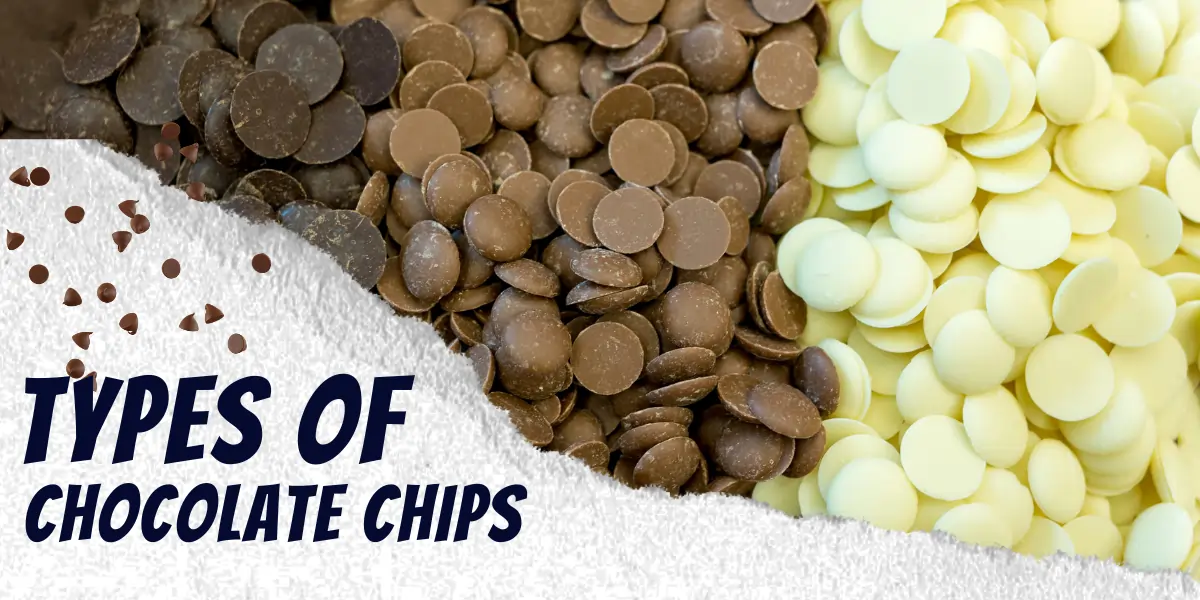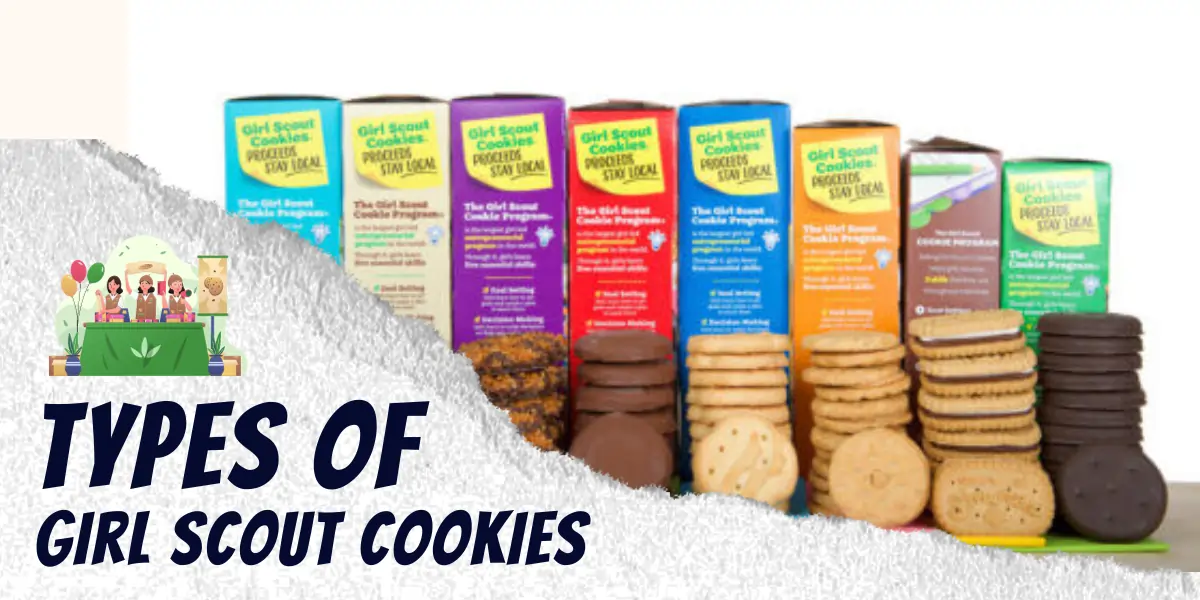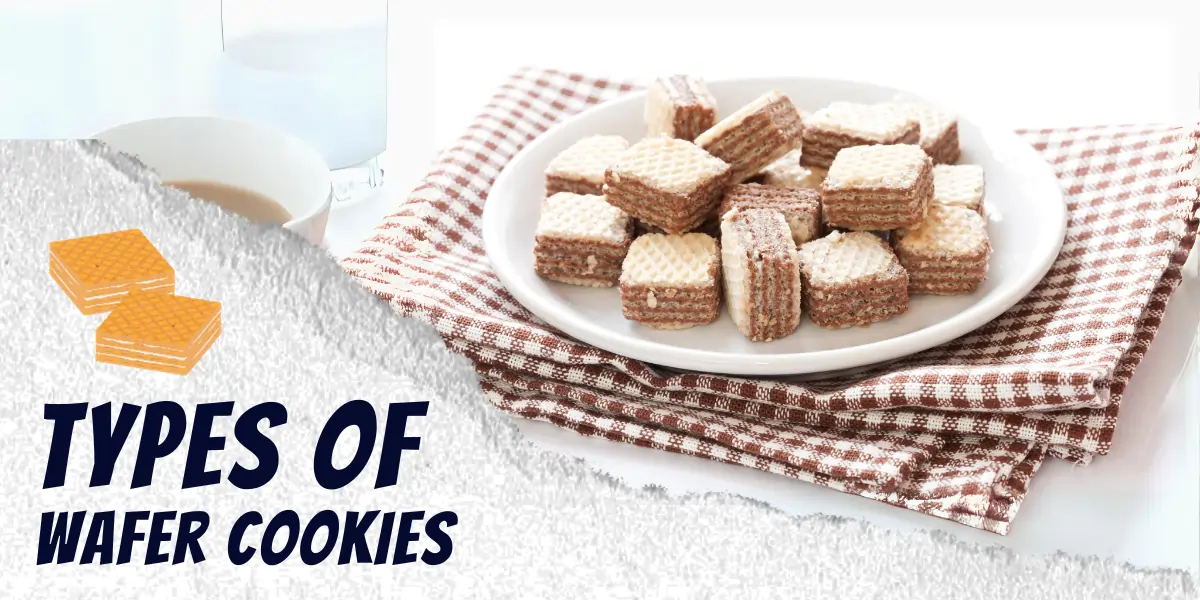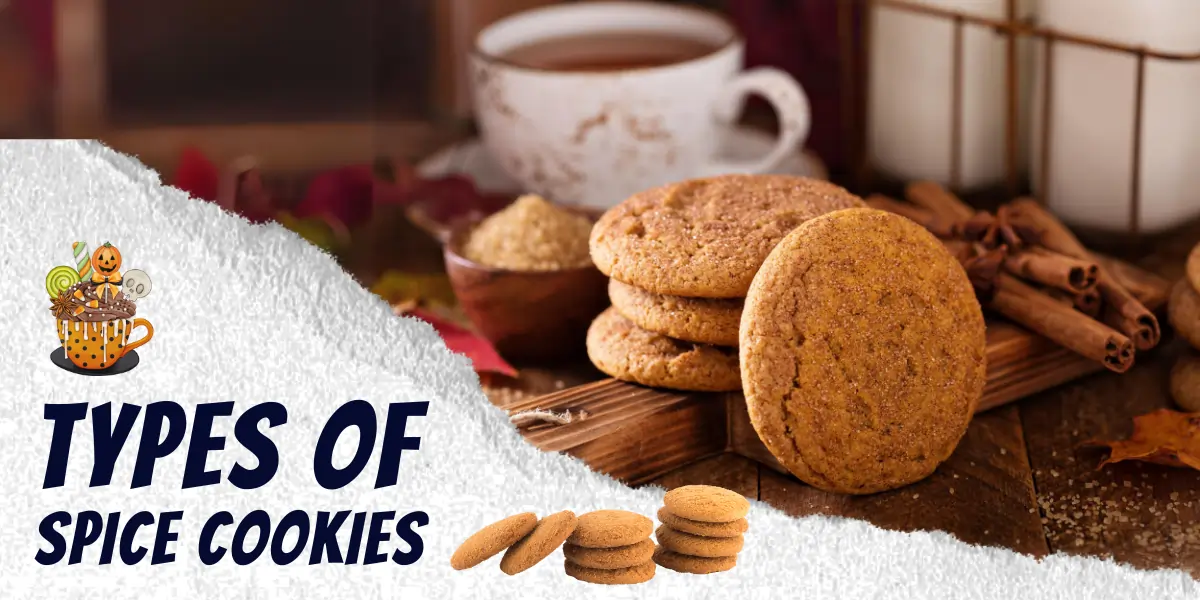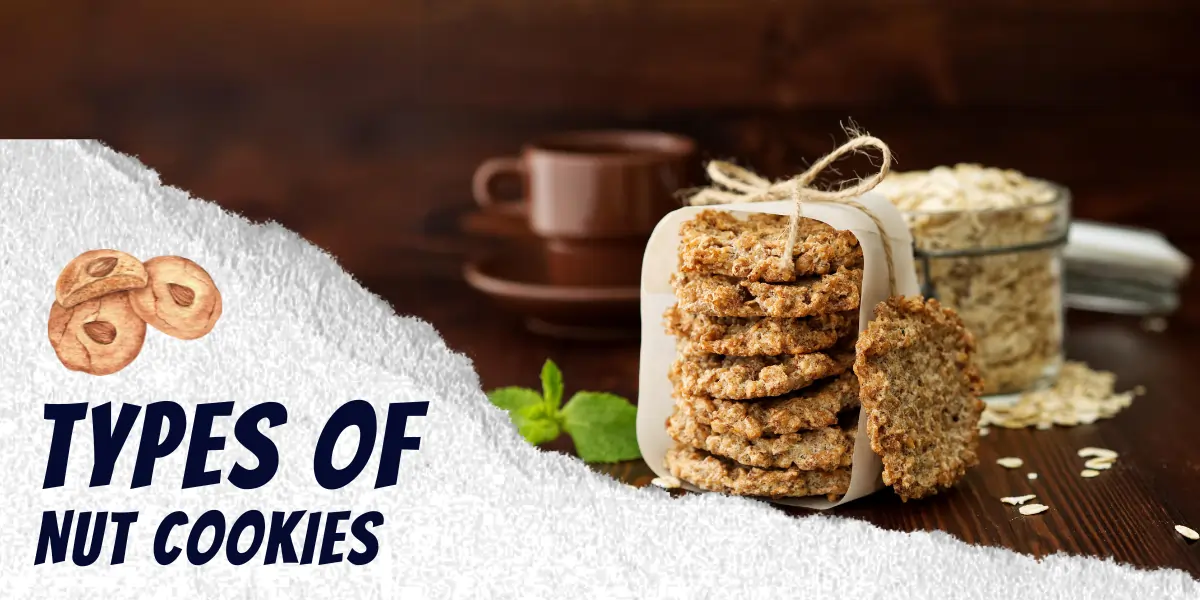Picture a just-baked cookie bursting with melty chocolate chunks. Now imagine sinking your teeth into that first blissful bite. Glorious, right? The alchemy of turning ordinary dough and chocolate into a crave-worthy treat inspires home bakers daily.
But not all chocolate chips taste the same once baked. Understanding types of chocolate chips and their uses empowers bakers to transform flour and sugar into chocolate chip perfection.
In this guide, we’ll demystify chocolate chip categories so you can confidently chop, melt and bake those morsels into various types of cookies to concoction your heart desires. Let’s discover what makes each style of chip special!
Table of Contents
An Intro to Chocolate Chips
Chocolate chips come in a variety of types, each with its unique flavor profile and baking properties. The three main categories are dark, milk, and white chocolate chips.
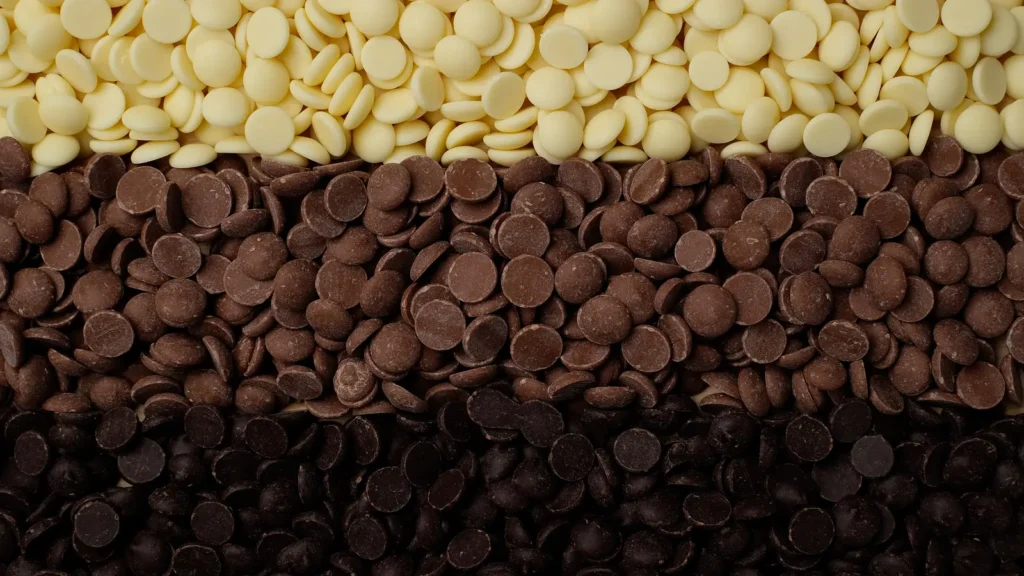
- Dark Chocolate Chips: These chips have a higher cocoa percentage, resulting in a more intense chocolate flavor. They are available in bittersweet, semisweet, and extra dark varieties. The cocoa percentage can impact the flavor, with higher percentages leading to a more bitter taste[1].
- Milk Chocolate Chips: These chips are smoother and sweeter, made with more sugar and whole milk. They are often used in recipes where a milder chocolate flavor is desired[2].
- White Chocolate Chips: Unlike dark and milk chocolate chips, white chocolate chips do not contain any cocoa solids. Instead, they are made from cocoa butter, sugar, and milk solids. They offer a creamy and sweet flavor.
Brand Comparisons
There are several major brands of chocolate chips, each offering different flavors, sizes, and cocoa percentages. Here are a few examples:
| Brand | Cacao Percentage | Flavors Available | Sizes | Notes |
|---|---|---|---|---|
| Nestlé Tollhouse | Varies by product | Semi-sweet, milk, dark, white, peanut butter, etc. | Standard, mini, chunks | Known as the originator of chocolate chips, Nestlé offers a wide range of flavors and sizes. |
| Hershey’s | Varies by product | Semi-sweet, milk, special dark, white | Standard, mini | Hershey’s offers a variety of flavors and sizes, and their chips are widely available. |
| Guittard | Varies by product | Semi-sweet, milk, extra dark, white, etc. | Standard, mini, extra large | Guittard is known for high-quality chips and offers a range of flavors and cocoa percentages. |
| Ghirardelli | Varies by product | Semi-sweet, bittersweet, milk, white, etc. | Standard, mini | Ghirardelli offers premium chocolate chips in a variety of flavors. |
| Trader Joe’s | Varies by product | Semi-sweet, milk, dark, white | Standard | Trader Joe’s chips are described as not too sweet, with a touch of toffee flavor and just a hint of bitterness. |
| Equal Exchange | Varies by product | Semi-sweet, bittersweet | Standard | These chips are soy- and dairy-free, as well as vegan- and kosher-certified. |
| Callebaut | Varies by product | Dark, milk, white | Standard | Callebaut offers high-quality Belgian chocolate chips. |
- Nestle Toll House: Known for their classic semi-sweet chips, they also offer dark, milk, and white chocolate varieties.
- Hershey’s: Offers semi-sweet, milk, and special dark chocolate chips.
- Guittard: Known for high-quality chips in a range of flavors and cocoa percentages.
- Ghirardelli: Offers premium chocolate chips in semi-sweet, bittersweet, and milk chocolate[5].
Please note that the cacao percentage can vary significantly within each brand depending on the specific product. Always check the packaging for the most accurate information.
Non-Cookie Uses
Chocolate chips aren’t just for cookies! Here are some creative ways to use them:
- Ice Cream: Add chocolate chips to homemade ice cream for a delightful crunch.
- Fudge: Use white chocolate chips in fudge recipes for a creamy, sweet flavor.
- Trail Mix: Mix chocolate chips with nuts and dried fruit for a sweet and salty snack.
- Sorbet: Sprinkle chocolate chips on top of sorbet for a decadent touch[1].
Flavor Add-ins
Adding different flavors to your chocolate chip cookies can create a unique and delicious treat. Here are a few ideas:
- Tropical Flavors: Consider using mango or pineapple extract in your cookie dough for a tropical twist. You could also add in some dried tropical fruit like coconut, papaya, or banana for added texture and flavor.
- Peanut Butter: Add peanut butter chips to your cookie dough for a classic flavor combination. You could also use a peanut butter-flavored cookie dough for a double dose of peanut butter flavor.
- Butterscotch: Butterscotch chips can add a sweet and buttery flavor to your cookies. Try them in an oatmeal cookie for a comforting treat.
- Mint: For a refreshing twist, try adding mint chocolate chips to your cookie dough. They would be especially delicious in a chocolate cookie for a mint chocolate chip flavor.
- Nutella or Chocolate Spread: Add a tablespoon of Nutella or chocolate spread to your cookie dough for a rich, chocolatey flavor. You could also sprinkle some chopped hazelnuts on top for added crunch.
- Marshmallows and Graham Crackers: For a fun twist on a classic s’more, add mini marshmallows, crushed graham crackers, and chopped chocolate to your cookie dough.
- Caramel and Sea Salt: For a sweet and salty treat, add chopped caramel candies to your cookie dough and sprinkle with flaky sea salt before baking.
- Sprinkles and White Chocolate Chips: For a fun and festive cookie, add sprinkles and white chocolate chips to your cookie dough. These would be perfect for a birthday party or celebration.
Cocoa/Cacao Percentage
The cocoa or cacao percentage in chocolate chips is a crucial factor that determines the intensity of the chocolate flavor. This percentage indicates the total amount of the chocolate that comes from the cocoa bean itself, including both cocoa solids and cocoa butter.
Dark Chocolate Chips: These typically have a cocoa percentage ranging from 65% to 99%. The higher the percentage, the more intense and less sweet the chocolate flavor will be. Dark chocolate chips are ideal for those who prefer a less sweet, more pronounced chocolate taste.
Milk Chocolate Chips: Milk chocolate chips have a lower cocoa percentage, usually between 35% to 55%, and contain milk powder and more sugar, making them sweeter and creamier than dark chocolate chips. The minimum cocoa content required by law varies by region, with the U.S. requiring at least 10% and the EU 25%.
White Chocolate Chips: White chocolate chips do not contain cocoa solids, only cocoa butter. The percentage of cocoa in white chocolate refers to the amount of cocoa butter present. Since cocoa butter carries aroma and texture rather than flavor, white chocolate chips are sweet and creamy.
Understanding the cocoa percentage is essential for choosing the right chocolate chips for your recipe. A higher cocoa percentage will yield a richer, more robust chocolate flavor, while a lower percentage will result in a sweeter, milder taste. This knowledge allows bakers to tailor their chocolate choices to the desired outcome of their baked goods or confections.
Breaking Down Dark Chocolate Chips
When most folks picture chocolate chip cookies, chewy cookies bursting with rich dark chocolate come to mind first. Between semisweet and bittersweet varieties, the dueling kings of dark chocolate chips each offer unique perks.
Semisweet Chips
Semisweet chocolate chips are a versatile choice for baking. They are not typically very sweet, but they are sweeter and less intensely flavored than bittersweet chocolate chips.
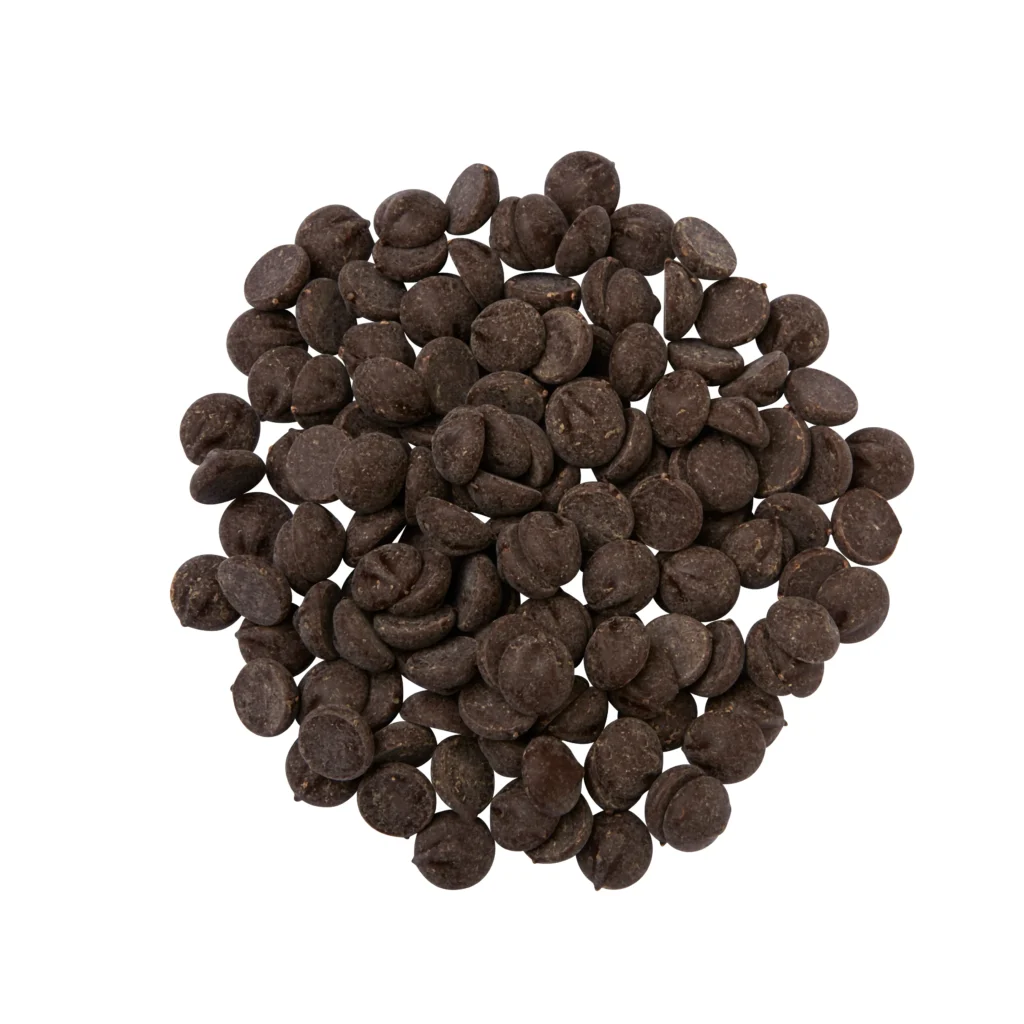
They lack the bitter notes that some ultra-dark chocolates have, providing a balanced flavor to most chocolate chip cookie recipes.
- Cacao Percentage: Semisweet chocolate chips generally contain no more than 50% sugar, meaning that the rest of the mass is made up of cocoa solids and cocoa butter.
- Flavor Profile: Semisweet chocolate chips offer a balanced flavor, adding just the right amount of sweetness and chocolate flavor to most recipes.
- Uses: Semisweet chocolate chips are the default mix-in for most chocolate chip cookie recipes. They can also be used in brownies and other recipes that call for a quantity of chocolate chips.
Bittersweet Chips
Prefer deeper, darker chocolate flavor? Welcome to bittersweet territory! With more concentrated cocoa and less sugar than semisweet morsels, bittersweet chocolate chips bring rich complexity.
Bittersweet chocolate chips are for those who prefer a less sweet, more intense chocolate flavor. They contain less sugar and more cocoa than semisweet chocolate chips.
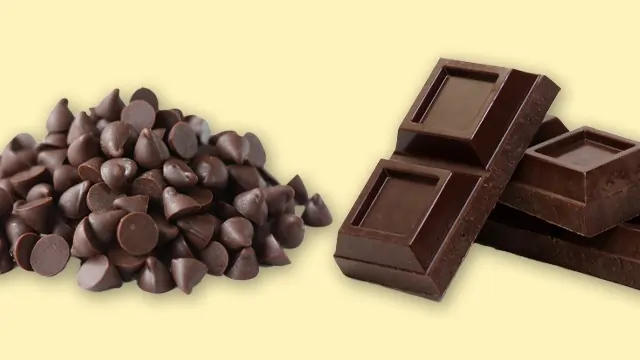
- Cacao Percentage: Bittersweet chocolate chips typically have a higher cacao percentage than semisweet chips. The exact percentage can vary, but it’s often around 70% or higher.
- Flavor Profile: Bittersweet chocolate chips have a deep, rich chocolate flavor with less sweetness than semisweet chips. They can be slightly bitter, hence the name.
- Uses: Bittersweet chocolate chips can be used in any recipe that calls for chocolate chips, but they’re particularly good in recipes where a strong chocolate flavor is desired, such as in brownies or chocolate cakes.
For hardcore chocolate lovers, bittersweet chips deliver sublime decadence worth savoring.
Comparing Semisweet vs Bittersweet Chips
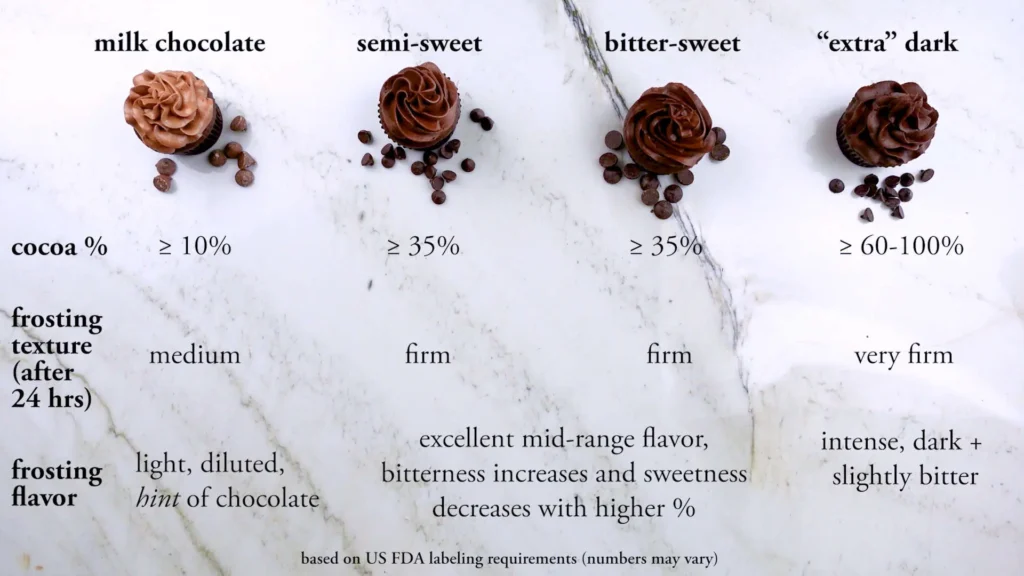
How do you choose between semisweet and bittersweet chips when baking? This line-up summarizes key contrasts:
| Semisweet | Bittersweet | |
|---|---|---|
| Flavor | Mellow, balanced | Richer, intense |
| Sweetness | Medium-high | Low-medium |
| Cacao % | 35-60% | 60-100% |
| Price | Lower | Higher |
| Best For | Crowd-pleasing cookies | Brownies, fudge |
In summary – semisweet pleases all palates while bittersweet showcases pure chocolate glory.
Get To Know Milk Chocolate Chips
Representing the lighter side, milk chocolate chips sweeten the pot when you crave that nostalgic sugar cookie flavor in chocolaty form. Let’s highlight what makes milk chocolate chips unique.
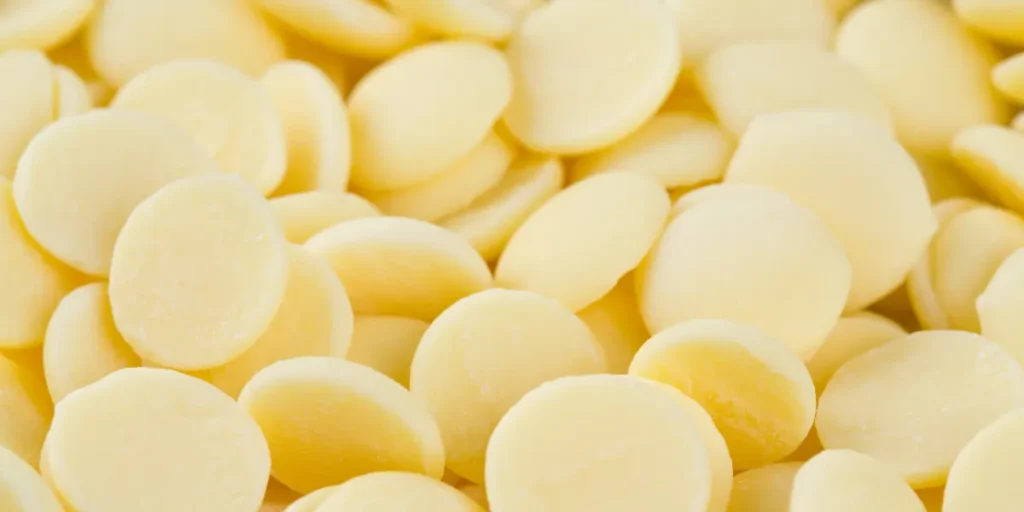
Milk chocolate chips are a popular choice for many bakers due to their smooth, creamy texture and sweet flavor. They are made with a higher sugar content and whole milk, which gives them their characteristic taste and texture.
Cacao Percentage: Milk chocolate chips typically have a lower cacao percentage compared to dark chocolate chips, usually between 35% to 55%. This makes them sweeter and less intense in flavor.
Brands: Several major brands offer milk chocolate chips, including Nestlé Tollhouse, Ghirardelli, Guittard, and Equal Exchange. Each brand offers a slightly different flavor profile and cacao percentage.
Size: Milk chocolate chips are available in various sizes, from standard to mini. The size can affect the distribution of chocolate in your baked goods. Mini chips can provide a more even spread of chocolate, while larger chips can create pockets of melted chocolate.
Uses: While milk chocolate chips are often used in cookies, they can also be used in a variety of other baked goods, including brownies, muffins, and pancakes. Some people find that milk chocolate chips can make cookies too sweet, but this is a matter of personal preference.
Baking Tips: When using milk chocolate chips in baking, it’s important to remember that they can burn more easily than dark chocolate chips due to their higher sugar content. Therefore, it’s recommended to bake at a slightly lower temperature or to keep a close eye on your baked goods while they’re in the oven.
milk chocolate chips are a versatile ingredient that can add a sweet, creamy flavor to a variety of baked goods. Whether you prefer them in cookies, brownies, or pancakes, they’re sure to add a delicious touch to your recipes.
With their nostalgic sweetness, milk chocolate chips charm kids and kids-at-heart.
Understanding White Chocolate Chips
White chocolate chips are a versatile ingredient that can add a creamy, sweet flavor to a variety of baked goods. Unlike dark and milk chocolate chips, white chocolate chips do not contain cocoa solids, only cocoa butter, which gives them their characteristic color and flavor.
Cocoa Percentage: White chocolate chips do not contain cocoa solids, only cocoa butter. The percentage of cocoa in white chocolate refers to the amount of cocoa butter present. Since cocoa butter carries aroma and texture rather than flavor, white chocolate chips are sweet and creamy.
Brands: Several major brands offer white chocolate chips, including Nestlé Tollhouse, Ghirardelli, Guittard, and Equal Exchange. Each brand offers a slightly different flavor profile and cocoa percentage.
Flavor Profile: White chocolate chips are known for their sweet, creamy flavor. They often have a hint of vanilla, which can add a nice depth of flavor to baked goods.
Uses: White chocolate chips can be used in a variety of baked goods, from cookies and brownies to cakes and muffins. They can also be melted down and used in candy making or as a drizzle over desserts.
Baking Tips: When baking with white chocolate chips, it’s important to remember that they can burn easily due to their high sugar and milk content. Therefore, it’s recommended to bake at a slightly lower temperature or to keep a close eye on your baked goods while they’re in the oven.
white chocolate chips are a versatile ingredient that can add a sweet, creamy flavor to a variety of baked goods. Whether you prefer them in cookies, brownies, or cakes, they’re sure to add a delicious touch to your recipes.
Types of Italian Pizzellas: What You Need to Know
Dark vs Milk Chocolate Chips Comparison
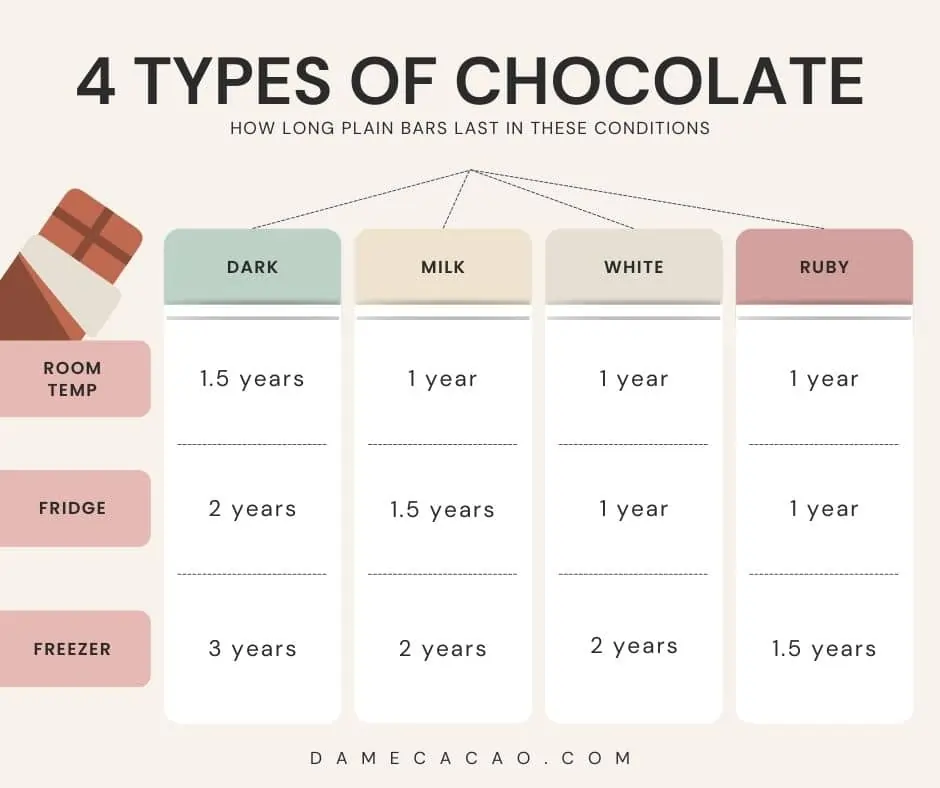
How do milk chocolate chips differ beyond sweetness factor?
| Dark | Milk | |
|---|---|---|
| Flavor Intensity | High | Low-Medium |
| Sweetness | Low-Medium | High |
| Texture | Firm | Smooth, creamy |
| Sheen | Dull | Shiny |
| Best For | Classic cookies | Sugar cookies |
So when craving old-fashioned chocolate chip cookies, milk chocolate chips satisfy sweet teeth of all ages while semisweet and bittersweet chips provide more nuanced flavor.
How White Chips Differ from Milk & Dark
See how white chocolate chips compare beyond just color:
| – | White | Milk | Dark |
|---|---|---|---|
| Flavor | Sweet, creamy | Creamy, sweet | Chocolate-forward |
| Texture | Smooth | Smooth | Rough |
| Sweetness | Very high | High | Low-Medium |
| Color | Stark white | Light to mid brown | Dark brown |
| Best Uses | Accent in filling cookies | Sugar cookies | Classic cookies |
So while white chocolate chips seem like the black sheep of the family, their color and milky flavor delight cookie connoisseurs.
Tips for Baking Different Chips
Now that you know your chips, how do you bake those morsels to perfection? Follow these guidelines with different styles:
Dark Chocolate
- Reduce baking time to prevent burning
- Mix in raising agents for increased lift to offset dense dough
- Chill dough for at least 24 hours for best consistency
Milk Chocolate
- watch closely to avoid overbaking
- Consider reducing oven temperature 25 degrees
- Allow more spacing between cookies on sheet
White Chocolate
- Gently fold chips to prevent streaking colors
- Increase flour or other dry ingredients
- Bake 1-2 minutes less than directions state
Other Baking Tips
When baking with chocolate chips, there are several techniques to consider:
- Holding Shape: Chocolate chips are designed to hold their shape when baked, but the final texture can vary depending on the type of chip and the specific recipe[1].
- Chopping Chips: For a more rustic look or a more intense chocolate flavor, consider chopping your chocolate chips into chunks before adding them to your dough[3].
- Melting Techniques: Chocolate chips can be melted for use in a variety of recipes. Be careful to use low heat and stir frequently to prevent the chocolate from burning[1].
- Using in Different Baked Goods: While chocolate chips are most commonly used in cookies, they can also be used in a variety of other baked goods like brownies, muffins, and breads[1].
With understanding and practice, you’ll effortlessly adjust recipes to master every type of chocolate chip.
Getting Creative with Chips
Beyond traditional applications, creative bakers transform chocolate chips into unique desserts by:
- Swapping mix-ins like chopped nuts, dried fruits or candy pieces
- Drizzling melted chips over finished treats
- Freezing chips into homemade gelato, sorbets and ice creams
- Using white chocolate chips in fudge recipes instead
Don’t limit chocolate chips just to cookies – their versatility can elevate countless treats!
Health Benefits of Dark Chocolate Chips
Dark chocolate chips, especially those with high cocoa content, are not just delicious but also offer several health benefits. They are rich in antioxidants and minerals, and can contribute to heart health.
- Rich in Nutrients: Dark chocolate chips are loaded with soluble fiber and minerals such as iron, magnesium, copper, and manganese. They also contain potassium, phosphorus, zinc, and selenium[5].
- Heart Health: The flavanols in dark chocolate stimulate nitric oxide production in the body, which can improve blood flow and lower blood pressure. Dark chocolate also contains compounds like polyphenols and theobromine, which can help lower the risk of heart disease.
- Anti-Inflammatory Properties: Dark chocolate contains compounds with anti-inflammatory properties that may help reduce inflammation in the body.
- Gut Health: Some studies suggest that eating dark chocolate may benefit the gut microbiome, which can aid digestion.
Storing Chocolate Chips
Chocolate chips, whether melted, in chunks, or in their original form, should be stored properly to maintain their quality.
- Original Form: Store chocolate chips in a cool, dry place in an airtight container. They can last up to two years if stored properly.
- Melted: Once melted, chocolate chips can be poured into a silicone mold or on a flat surface lined with parchment paper and refrigerated to harden. Once hardened, they can be broken into pieces and stored in an airtight container in the refrigerator[1].
- Chunks: If you’ve chopped your chocolate chips into chunks, store them in an airtight container in a cool, dry place. They can last for several months[1].
Difference Between Chips, Chunks, Baking Bars, etc.
- Chips: Chocolate chips are small pieces of chocolate that are designed to hold their shape when baked. They are perfect for cookies, muffins, and other baked goods[3].
- Chunks: Chocolate chunks are larger pieces of chocolate that melt when baked, creating pockets of chocolate in your baked goods. They are great for cookies and brownies[3].
- Baking Bars: Baking bars are solid blocks of chocolate that can be chopped or melted. They are often used in recipes that require melted chocolate[3].
Recipes Using Chocolate Chips
Chocolate chips can be used in a variety of recipes, from cookies to cakes to muffins. Here are a few ideas:
- Chocolate Chip Cookies: The classic use for chocolate chips, these cookies are a favorite for many. You can use dark, milk, or white chocolate chips depending on your preference[1].
- Chocolate Chip Muffins: Add chocolate chips to your favorite muffin recipe for a sweet surprise. They work well in banana, pumpkin, or vanilla muffins[1].
- Chocolate Chip Pancakes: Sprinkle chocolate chips onto your pancakes before flipping them for a delicious breakfast treat[1].
- Cookie Dough: Chocolate chips can be mixed into edible cookie dough for a sweet snack. Just make sure to use heat-treated flour to make it safe to eat[1].
Remember, the possibilities are endless when it comes to using chocolate chips in your baking!
Conclusion
While supermarket shelves overflow with chocolate chip options, recognizing differences between the major varieties removes guesswork from picking ideal morsels for whatever you bake.
Whether you prefer semisweet, bittersweet, milk chocolate or white chips, understanding flavor profiles, textures and best uses allows customizing cookies and other desserts to match preferences.
Baking offers edible alchemy – where simple ingredients meld into marvelous creations. Hopefully exploring chocolate chip types will unleash new feats of kitchen wizardry for you too!

